Do you know about the Best Blue Orchids? Are they real? Can you grow one in your home? Let’s have a look at some stunning varieties!
If you love exotic flowers, then here are some of the Best Blue Orchids that will look smashing in home decor!
Are Blue Orchids Real?
Have you ever wondered if blue orchids exist? If you are looking for a true blue natural orchid, then the choices are quite limited. However, there are many artificial ones available that are injected with a food-grade coloring to make them take a dark blue orchid.
The white phalaenopsis orchid is the plant of choice when it comes to making the orchid blue. A dye is injected into the plant, which gives it a vivid blue hue.
However, do bear in mind that it only works once, and the next set of flowers that the plant will bloom will be white.
Blue Orchid Meaning
Here’s a glimpse into the intriguing blue orchid flower meaning:
- Rarity and Uniqueness: Blue orchids flowers are a rarity in nature, and their scarcity has led them to symbolize uniqueness, distinctiveness, and exclusivity. Just as the orchid blue stands out among other flowers, it signifies individuality and being one-of-a-kind.
- Elegance and Grace: The orchid blue is often linked to elegance, sophistication, and grace. Blue orchids exude a refined and regal charm, making them a symbol of beauty and poise.
- Mystery and Intrigue: The blue hue of these orchids conveys an aura of mystery and intrigue. Like the depths of the ocean or the vastness of the sky, blue orchids evoke a sense of the unknown and the enigmatic, inviting contemplation and wonder.
- Desire and Passion: These orchids have been associated with desire, passion, and sensuality. The deep, rich blues can symbolize intense emotions, making blue orchids flowers an expression of romantic longing and fiery love.
Do not throw away your dead orchids! Find out why here
What Do Blue Orchids Symbolize
Wondering what does blue orchid symbolize? We’ve got you covered. Blue orchids symbolize a harmonious blend of rarity, mystery, and elegance. Their scarcity in the natural world reflects a message of uniqueness and individuality, standing as a testament to the extraordinary.
The enigmatic blue hue evokes a sense of intrigue and contemplation, encouraging a deeper exploration of the unknown. As a symbol of desire and passion, they represent intense emotions and romantic longing. These orchids, with their distinctive charm, inspire a sense of hope and new beginnings, echoing the promise of positive transformations.
Best Blue Orchids – Natural
Here are natural blue orchid flower you can grow or find.
1. Acacallis Orchid

Botanical Name: Acacallis cyanea
This blue purple orchid belongs to Columbia, Brazil, Venezuela, and Peru. Every bloom shows off a pretty metallic hue that gets deeper in bright but indirect light exposure.
Orchid leaves turning yellow? Find the solution here
2. Blue Vanda

Botanical Name: Vanda coerulea
Truly one of the real blue orchids out there, it displays purple-blue blossoms. This flower was first discovered by the explorer William Griffith in 1837.
3. Blue Lady Orchid
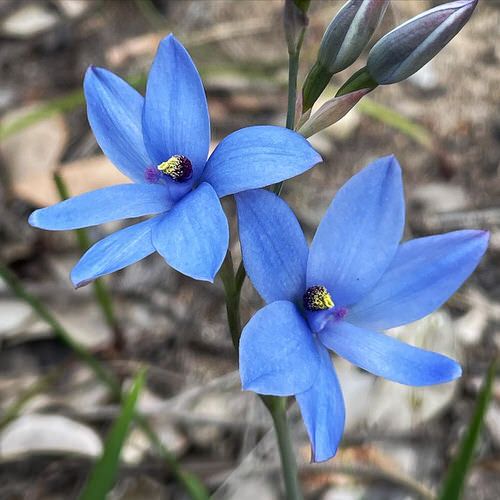
Botanical Name: Thelymitra crinita
If you want a single blue orchid flower, then this should be your pick. The flower has black and yellow columns in the center that match beautifully with the petals.
4. Bollea Orchid
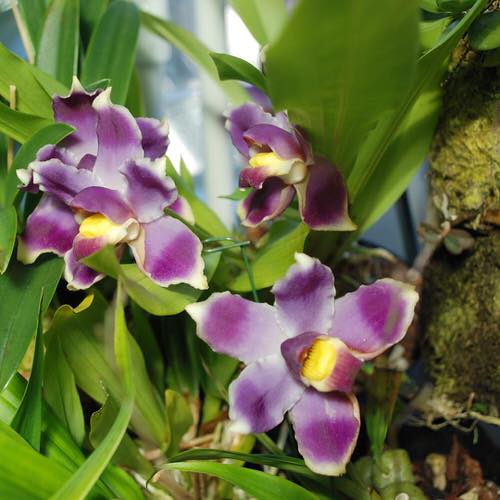
Botanical Name: Bollea Coelestis
Native to the South American Andes regions, this orchid can be extremely hard to cultivate. Also, its shade is more purple than blue and has a sweet musky scent.
Here are the common orchid growing mistakes you need to avoid
5. Purple Star Orchid
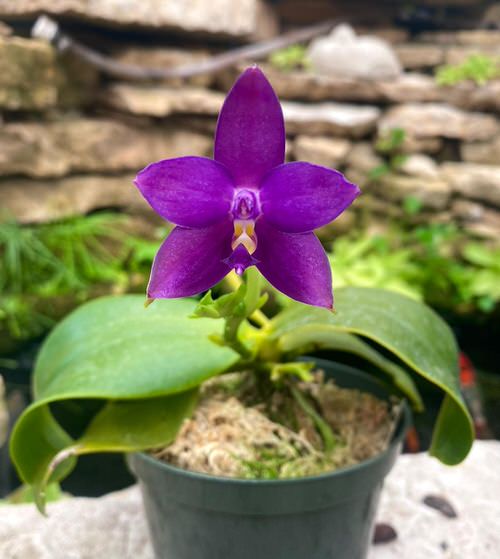
Botanical Name: Violacea coerulea ‘Purple Star’
Not exactly blue, but this one is the best of blue and purple orchids. The best part is it stays compact and is also easy to grow among all blue orchids!
6. Blue Tetraspis
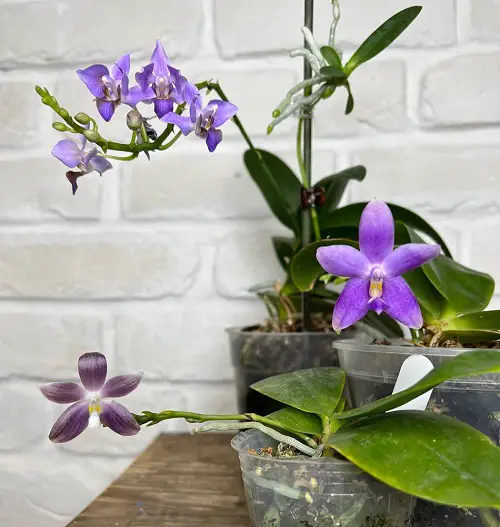
Botanical Name: Phalaenopsis tetraspis ‘Blue’
The Blue Tetraspis features elegant, delicate blue-purple flowers with soft lavender undertones, creating a captivating and serene presence.
7. Blue Sky Cattleya

Botanical Name: Cattleya amethystoglossa v. coerulea ‘Blue Sky’
This variety boasts exquisite sky-blue/purple petals accented by a rich, velvety lips, making it the most beautiful of blue orchids.
8. Blue Ghost Orchid 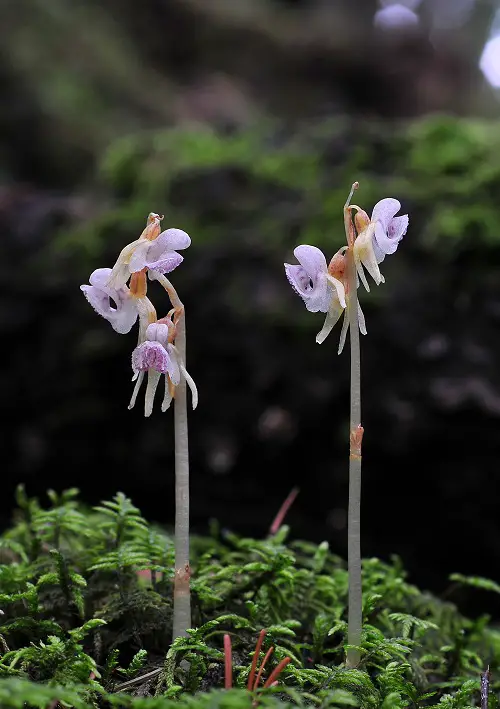
Botanical Name: Dendrophylax lindenii
The ghost orchid blue showcases translucent, ghostly silver-blue/purple petals that seem to shimmer and glow, evoking an otherworldly and captivating allure.
Check out the best orchid planter ideas here
Best Blue Orchids – Dyed
Apart from natural blue orchids, you can also go for dyed ones.
9. Blue Phalaenopsis Orchid
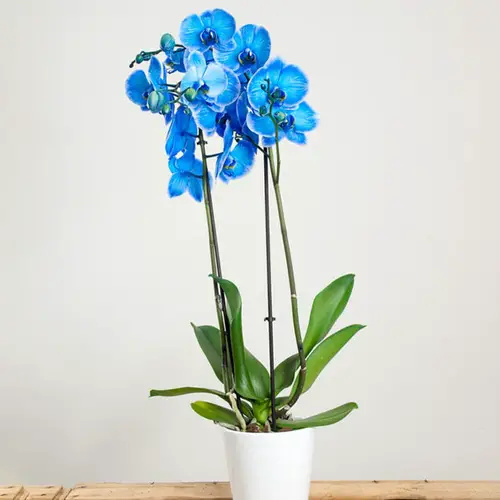
Looking for a blue orchid flower? The color is usually achieved with the help of blue dye. The flower is quite easy to look after.
10. The Royal Blue Phal
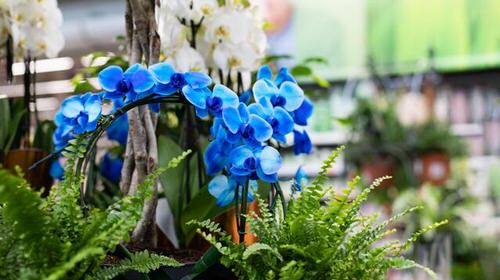
The floriculture industries have created a deep blue orchid plant using a special infusion process. This variety exhibits a sensational hue making it a favorite of plant enthusiasts.
11. The Blue Mystique Orchid
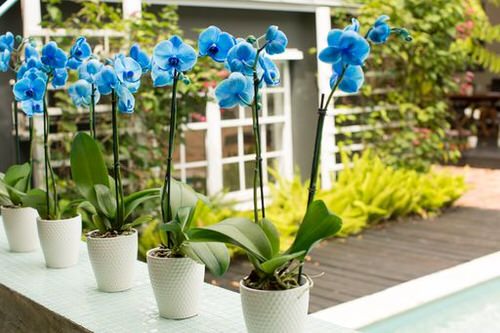
This colorful species shows off a lively blue shade. The company that has developed it uses a secret infusion formula to dye the petals.
12. The Blue Dendrobium

This orchid blue purple variety displays a string of pigmented and intense blue flowers. It has to be one of the most dazzling blue orchids you can have in your home.
Here are the best homemade fertilizers for orchids
How to Grow Blue Orchids?

Growing blue orchids is not different from growing regular orchids albeit some minor differences that you need to take care of.
1. Growing Medium
The most important thing that you need to take care of is the growing medium. Blue orchids grow best in coconut fiber, dried fern roots, peat moss, sphagnum moss, small pieces of cork, fir bark, rock wool, perlite, and lava rock.
You can also blend all of the above-growing mediums in equal quantities to grow blue orchids.
2. Watering
Blue orchids hate overwatering, so make sure you water them no more than once in 7-9 days. Do not water the plant on a daily basis. The best is to wait till you can feel the growing medium getting a bit dry before you reach for the watering can.
3. Humidity
These plants love humidity between 60-80%. Keep the plant on gravel-filled water trays or use a humidifier for the best results.
4. Fertilizer
You can use any one of the 30-10-10, 10-10-10, or 10-10-30 blends to feed the plants once in 5-6 weeks. Dilute the fertilizer to 1/2 of the recommended strength.


